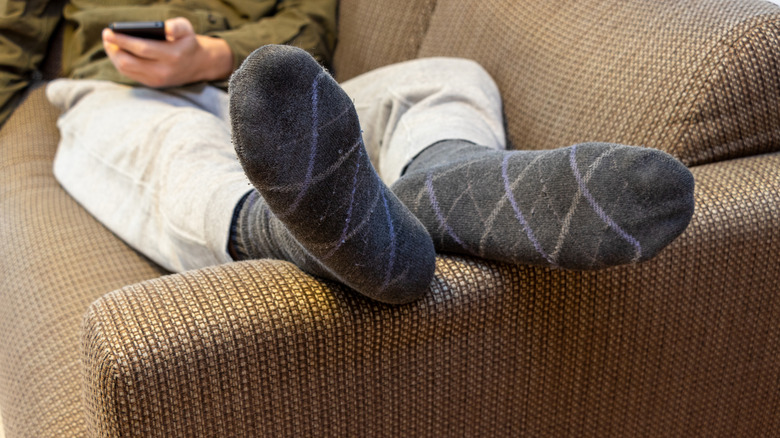
What Is Chronic Venous Insufficiency? How The Diagnosis May Impact Trump’s Life Expectancy – Health Digest
After photos of Donald Trump watching the FIFA Club World Cup final hit the Internet on July 13, 2025, social media lit up with musings and concerns about the president’s visibly swollen ankles. Observers suggested that Trump’s problems might be rooted in any number of conditions from gout to cardiovascular disease. However, a letter that was issued just four days later direct from The White House itself put all that speculation to rest. The memo, written by physician to the president Sean Barbabella, was addressed to White House Press Secretary Karoline Leavitt and named chronic venous insufficiency as the reason behind the worrying ankle swelling. In the document, Barbabella described Trump as being in “excellent health” after undergoing a barrage of tests and evaluations (including an MRI and metabolic panel), all of which was in line with his “routine medical care.”
These appear to be positive findings. But does the president need to be concerned about potential lasting effects of chronic venous insufficiency on his health? One way to find out is to understand more about the condition. The Cleveland Clinic explains that chronic venous insufficiency occurs when the veins throughout the legs stop working effectively. Under ideal circumstances, leg veins allow blood to flow to the toes and back to the heart without delay. When chronic venous insufficiency is present, the valves that enable the blood to leave the legs and get to the torso no longer function. Therefore, blood starts to gather in the leg and cause symptoms like the ankle inflammation seen in the pics of Trump.
An incurable but treatable condition
Other telltale signs of possible chronic venous insufficiency include discomfort, skin discoloration, and ulcers. There is no indication that Donald Trump has experienced any of those symptoms, though. In fact, a July 17, 2025, update from the Associated Press explicitly noted that Karoline Leavitt confirmed that the condition wasn’t making the president uncomfortable. That said, chronic venous insufficiency isn’t curable. Plus, it can be a harbinger for more serious problems, including blood clots, which can be life-threatening. However, Sean Barbabella made it clear in his memo that there was no evidence of any known co-occurring problems related to the diagnosis, thereby alleviating fans’ worries that the condition could potentially affect Trump’s life expectancy.
As for the next step if he seeks treatment, some non-invasive options for the 79-year-old head of state could involve wearing compression garments on the affected areas, keeping his feet elevated, or taking medication to encourage better blood flow. If Trump’s chronic venous insufficiency worsens over the years, he might be advised to speak with his medical team about surgical treatments such as re-routing blood to healthy veins or the removal of veins entirely.
Techniques to lessen chronic venous insufficiency progression
Of course, Donald Trump and his personal physicians may prefer to take preventive measures to minimize the chance of repeated chronic venous insufficiency episodes instead. Two lifestyle changes that could potentially make a difference in keeping his condition from worsening apply well to the president too. The first: Getting to a healthy weight, and maintaining it in the long run. According to a PBS report, Trump had a BMI of 28.0 as of April 2025. This would put him in the overweight category per the Centers for Disease Control and Prevention. And carrying extra weight is a risk factor for chronic venous insufficiency, as shown in the findings from a 2018 study in the Indian Journal of Medical Research, which confirmed that there is a correlation between higher BMI and serious chronic venous insufficiency, especially in older individuals (as a side note, Trump’s daily diet includes less healthy choices.)
The second prevention technique for managing chronic venous insufficiency is exercising more frequently. Though the divisive politician is an active golfer, his exercise routine has come under harsh criticism related to his reported dislike of working out. To clarify, what Trump experienced was hardly an unusual phenomenon for someone his age. According to the January 2025 edition of Treasure Island (FL), from StatPearls Publishing, up to 35% of American adults will experience chronic venous insufficiency. But his diagnosis is a reminder that you should get even minimal body changes, such as lower leg swelling, evaluated and diagnosed right away to rule out more serious problems.





